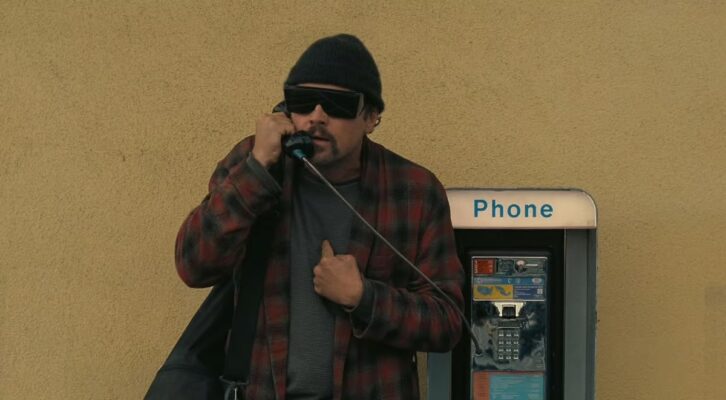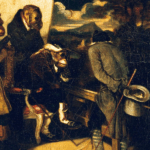In 1926, Agatha Christie’s The Murder of Roger Ackroyd was published. It sparked immediate controversy among readers, reviewers, and other crime writers. Was Ackroyd devilishly ingenious, the work of a master manipulator? Or did Agatha Christie simply cheat?
A hundred years later, the jury is still out.
The whodunnit holds a rather unique position in literature. It is not just a story. It is also a game played between the writer and the reader.
And, like all games, there are rules. S.S. Van Dine wrote Twenty Rules for Writing Detective Stories in 1928. The same year, Ronald Knox wrote The Detective Story Decalogue. Whether either writer was writing in response to Ackroyd is unclear, although both sets of rules seem to suggest that Christie should not have done that thing that she did—a thing that is impossible to describe without giving out a major spoiler.
The only possible spoiler, in fact. If you have never read it, I recommend it as a masterclass in deceptive writing, but do be prepared to be annoyed when you reach the denouement.
Both sets of rules can be condensed into one overarching rule: There must be fair play. The rules become part of the contract between the author and the reader, where the author promises that their detective will show them all the clues and solve the case before the reader does.
It is then for the reader to decide whether the author has met the terms of that contract. And readers do. Every time they leave a review, or recommend a book to a friend, they are saying, in effect, that the author delivered what they promised.
*
The whodunnit writer can be likened to a magician. If their detective walks onto the stage wearing his cape and holding his top hat and proves to the audience that his sleeves are empty. That there is nothing beneath his cape. Or under the table. That there are no mirrors. That his hat has a solid bottom and the table a solid top.
And then he pulls a rabbit from his hat, the audience will be impressed, even though they know, all along, that the rabbit is secreted beneath the false bottom of the detective’s hat.
If, however, he walks on stage wearing a cape and carrying his hat and immediately pulls a rabbit from it, why, then the detective is just a man with a rabbit in his hat.
And who is impressed by that?
*
Like the magician’s audience, the whodunnit reader knows that the writer will try to deceive them. And, as readers. We want to be deceived. There will be little fun to be had, after all, if we can guess the who, why, and what with in the first thirty pages of the novel. We might even conclude that, if we can solve the case so easily, the Great Detective isn’t really that great after all.
We want to know that we could have solved the case ourselves if, as Van Dine’s Rule 15 says, we had “been shrewd enough to see it.” When we reach the denouement and the murderer is revealed, we should be able to turn back the pages of the book and see that ‘all the clues really pointed to the culprit’.
We don’t mind red herrings. We don’t mind that all the suspects will lie to the detective. We might not even mind if the detective withholds his working theories from his assistant (and, also, thereby, from the reader) by saying things like, “You know my methods. Apply them,” as Sherlock Holmes does in The Sign of Four.
But we do expect the author to play by the rules. The clues given must be the clues that the Great Detective uses to solve the case. A motive must be produced, no matter how flimsy—serial killers who select their victims at random are not welcome in the whodunnit.
And the culprit must be someone who has been identified as a suspect, and is not disguised as the delivery boy who made a two-line appearance on page thirty-seven and is never seen again.
There are three main techniques that the author uses to hide the solution. They are Concealment, Misdirection, and Delay.
Concealment involves hiding the significant clue among a load of innocent, but more memorable, objects.
Misdirection is trying to focus the reader’s attention on the wrong thing or immediately following the revelation of a clue with something more narratively exciting, so that the reader forgets about the clue.
Delay involves leaving the production of the key clue—the clue that explains all the rest—as late in the story as they can, or in providing the clue itself very early, but only attaching meaning to that clue later, when the reader has forgotten ever being told about it.
As long as the clues are there, even when they are there in disguise, the reader is likely to feel satisfied that the solution was, indeed, there, but they were not shrewd enough to see it.
*
When I came to write The Game is Murder, I knew that I would have to abide by all the rules set out by Van Dine and Knox. But I wanted to go further.
When I came to write The Game is Murder, I knew that I would have to abide by all the rules set out by Van Dine and Knox. But I wanted to go further.What if I gave the reader all the clues openly, and I gave them right at the beginning of the novel? And what if, rather than directing the reader’s attention elsewhere, I actually pointed out the significance of each clue?
Could my detective still beat the reader to the solution?
That was what I set out to do, but only the reader can say whether I have succeeded or not.
***


















